Abstract
Some of the physiological and biochemical characteristics of a type F strain recently isolated from the United States were studied and compared with those of the prototype Langeland type F strain. The recent isolates were nonproteolytic, fermented sucrose and ribose, produced spores of low thermal resistance, produced a protoxin activated by trypsin, and grew and produced toxin at 38 F (3.3 C) from a spore inoculum. The prototype Langeland strain was proteolytic, did not ferment sucrose or ribose, and produced spores of relatively high thermal resistance, and the toxin of 3-day-old cultures was not activated by trypsin. Approximately two to three times the minimal lethal dose (MLD) of type F toxin from either Langeland or nonproteolytic strains was cross-neutralized by 1,000 anti-MLD of type E antitoxin. Antitoxin serums prepared by immunizing rabbits with the toxoid of the nonproteolytic type F isolate neutralized the toxin of the Langeland strain, but did not show cross-neutralization with the toxins of other types of Clostridium botulinum.
Full text
PDF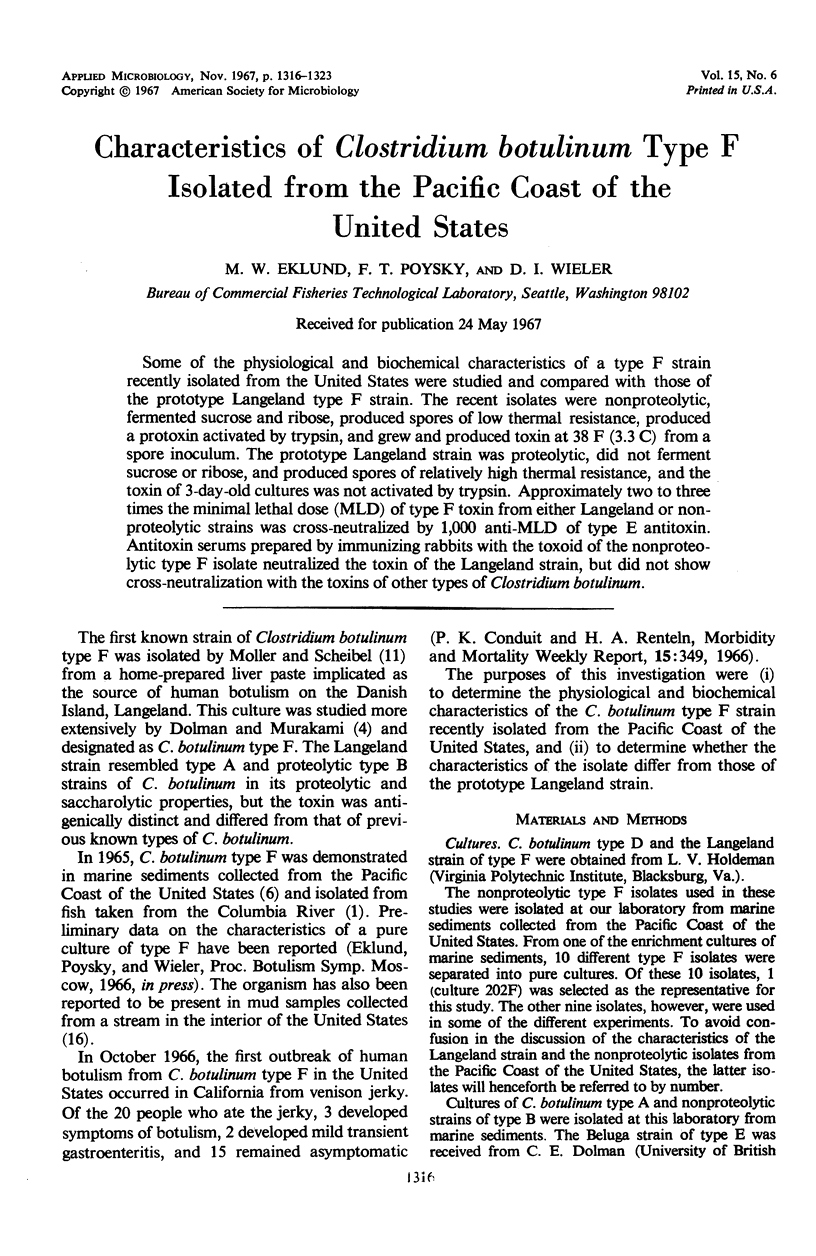
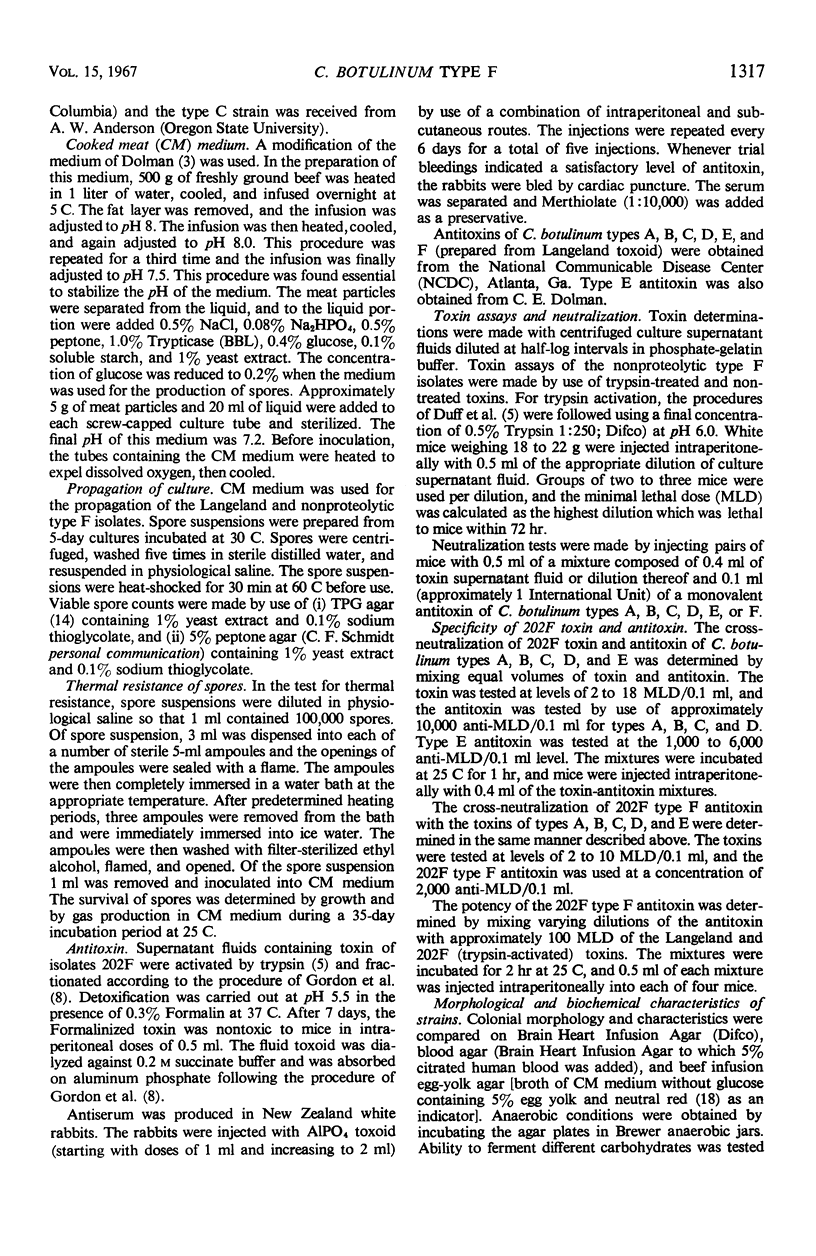
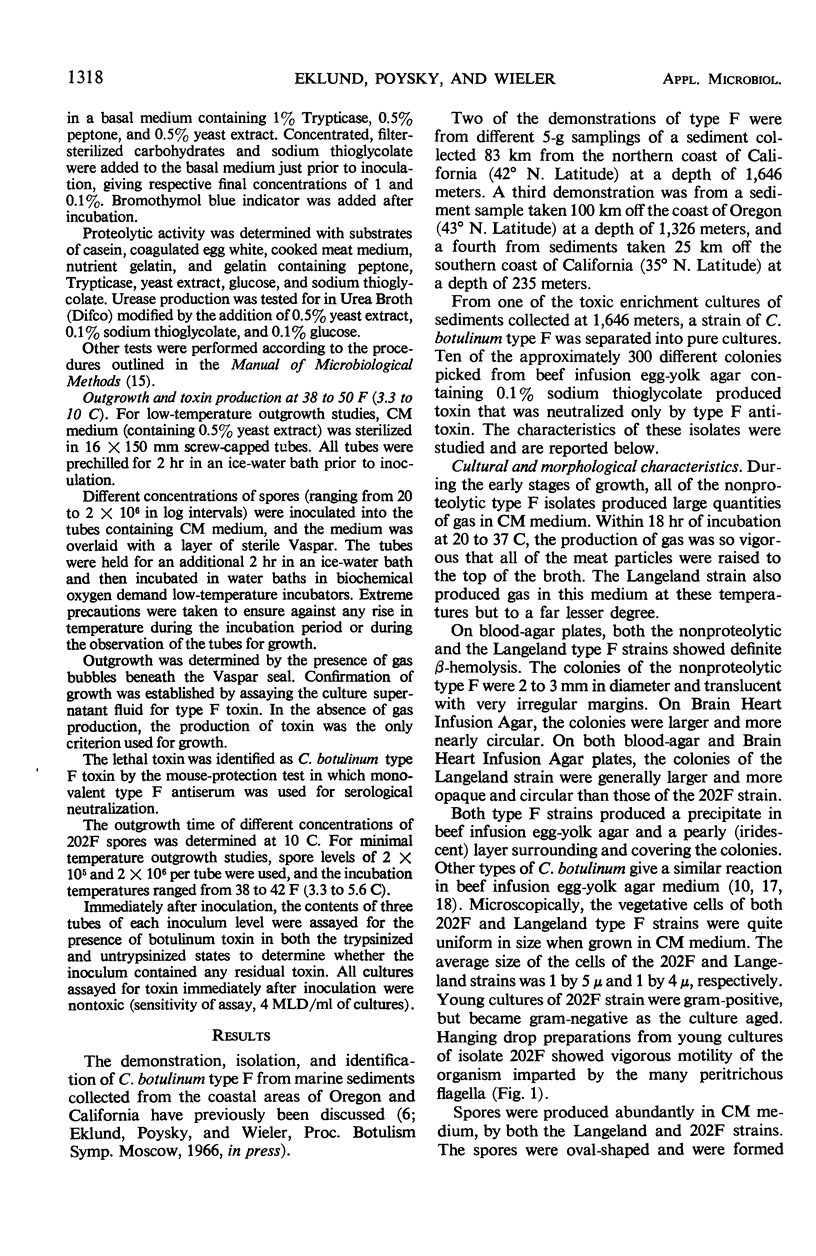
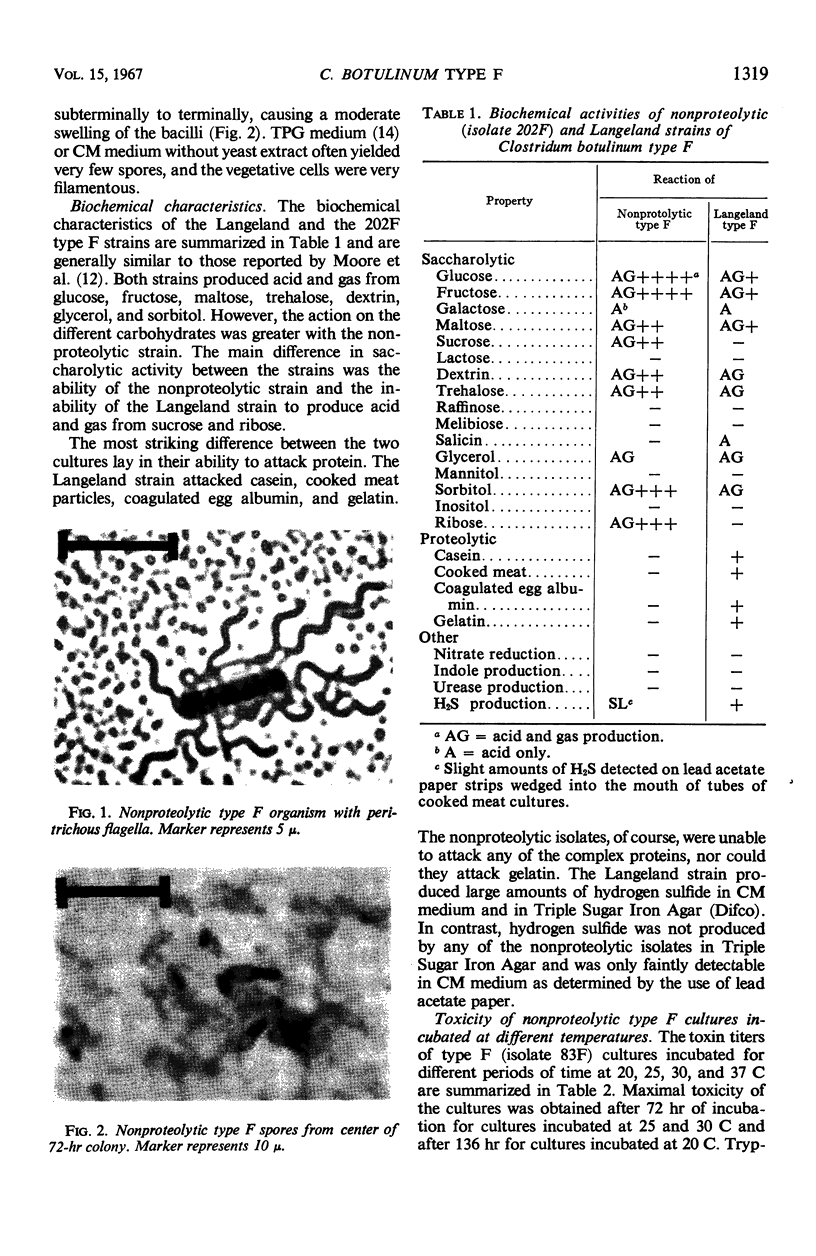
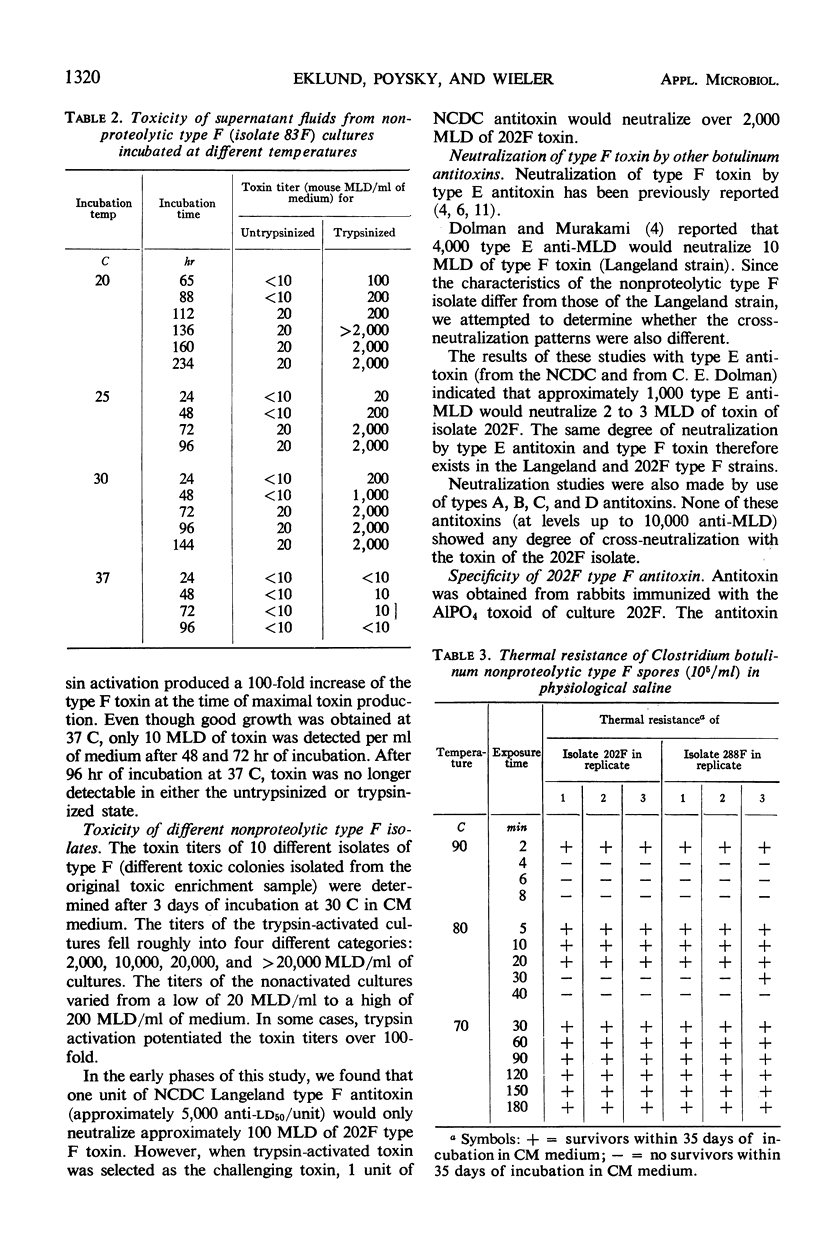
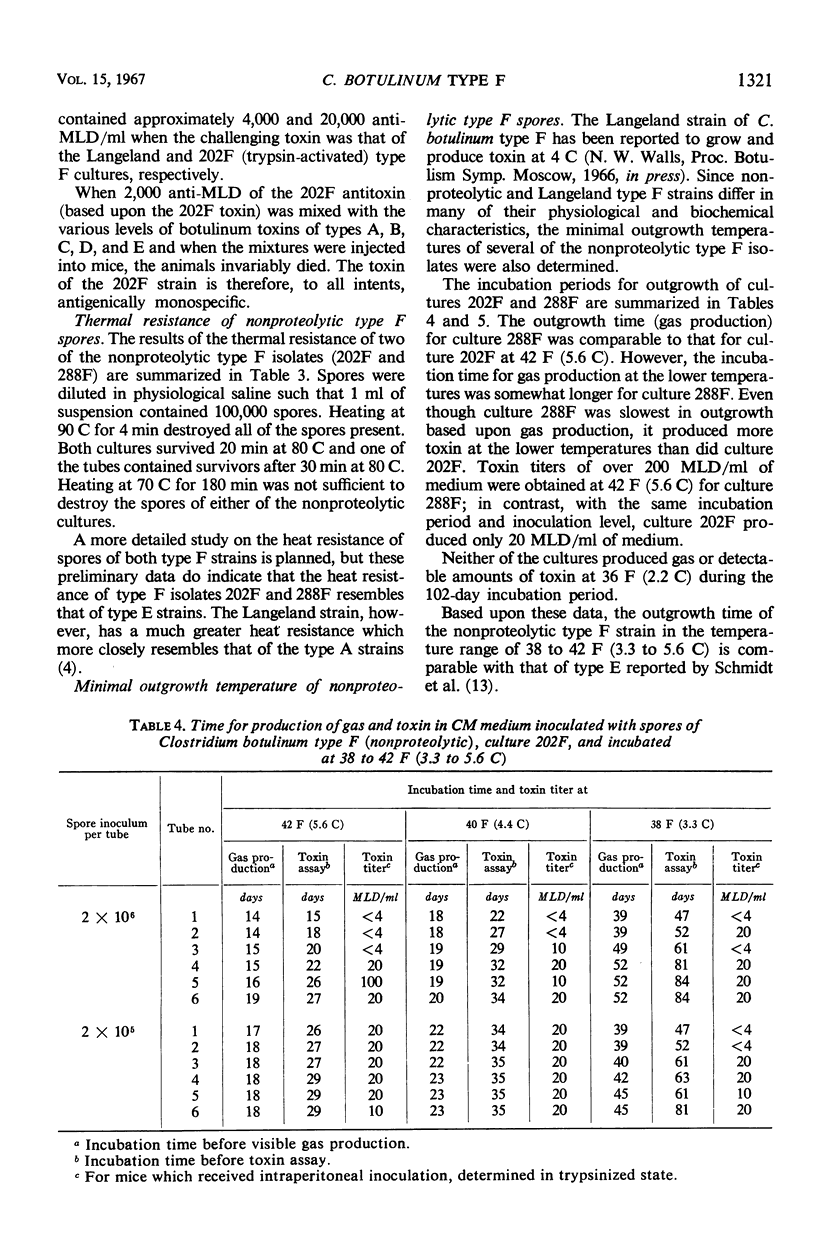
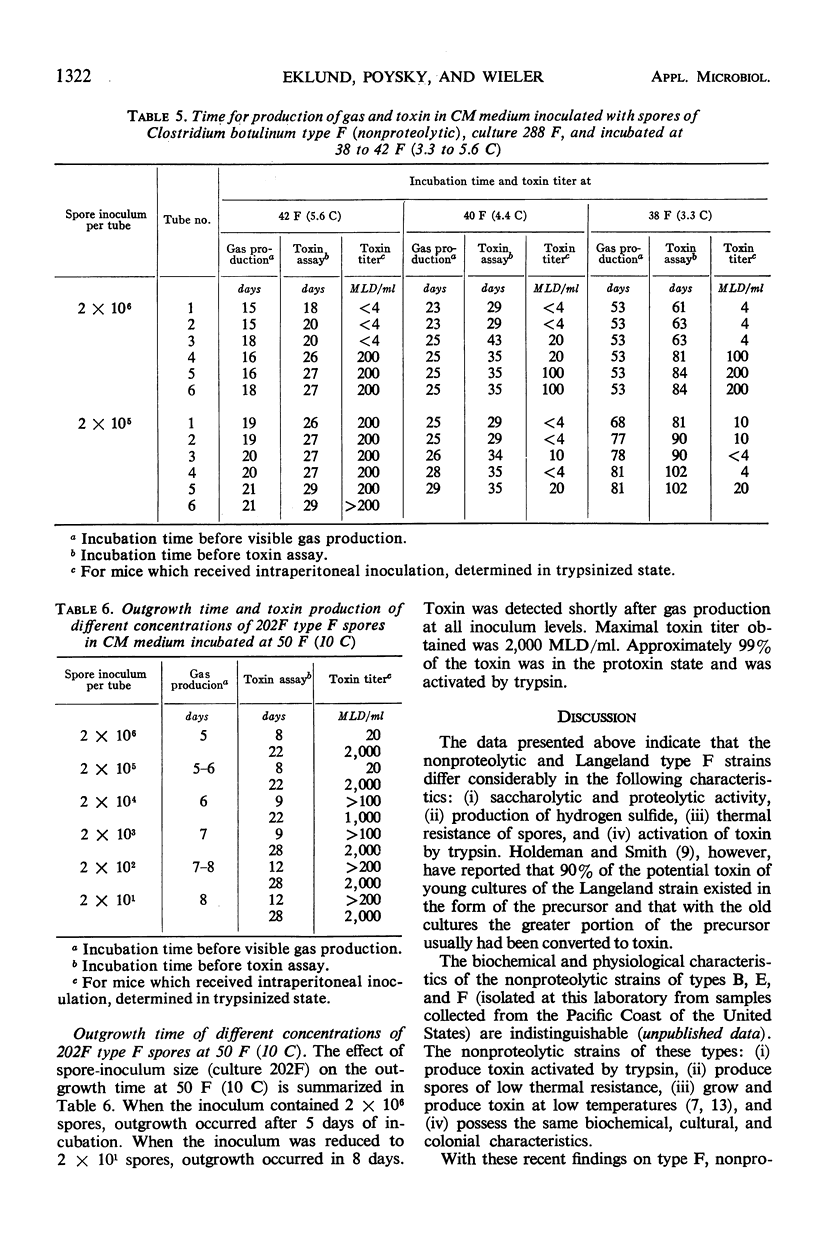
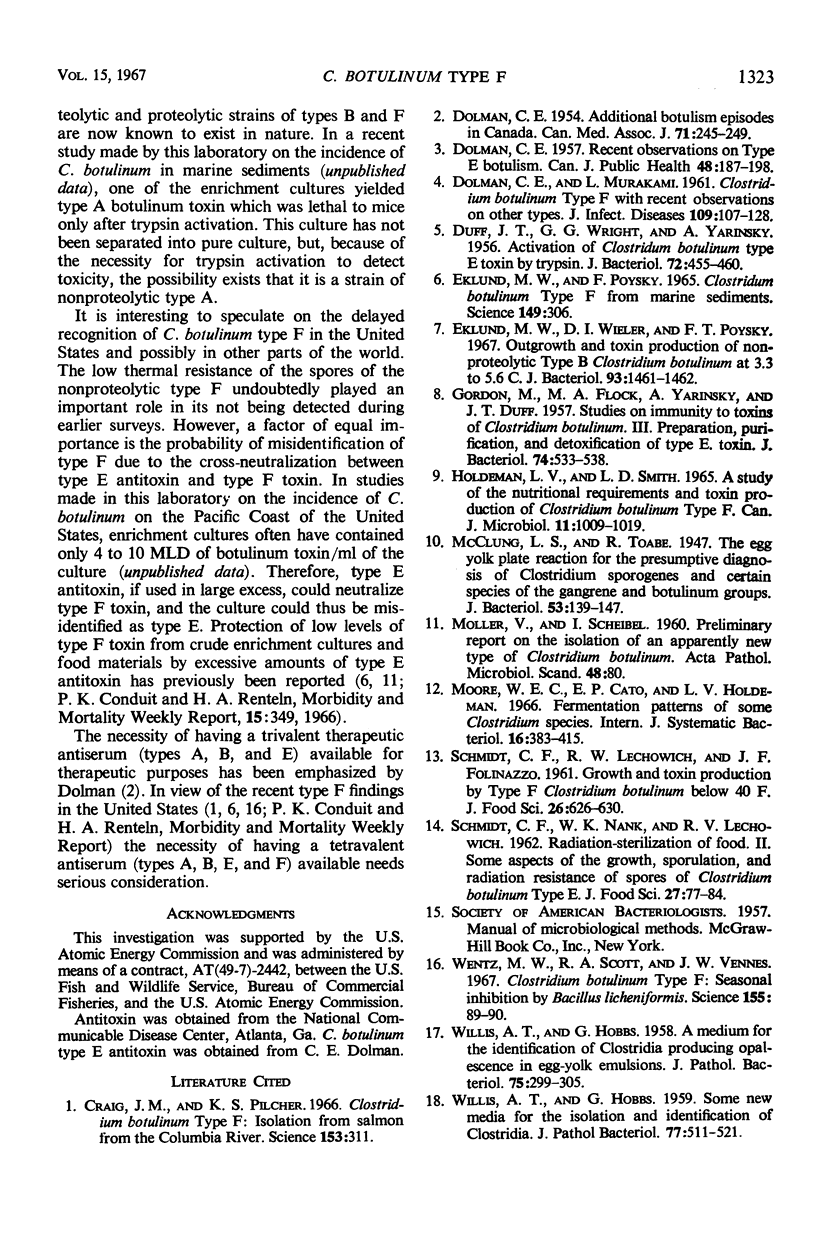
Images in this article
Selected References
These references are in PubMed. This may not be the complete list of references from this article.
- Craig J. M., Pilcher K. S. Clostridium botulinum Type F: Isolation from Salmon from the Columbia River. Science. 1966 Jul 15;153(3733):311–312. doi: 10.1126/science.153.3733.311. [DOI] [PubMed] [Google Scholar]
- DOLMAN C. E. Additional botulism episodes in Canada. Can Med Assoc J. 1954 Sep;71(3):245–249. [PMC free article] [PubMed] [Google Scholar]
- DOLMAN C. E. Recent observations on type E botulism. Can J Public Health. 1957 May;48(5):187–198. [PubMed] [Google Scholar]
- DUFF J. T., WRIGHT G. G., YARINSKY A. Activation of Clostridium botulinum type E toxin by trypsin. J Bacteriol. 1956 Oct;72(4):455–460. doi: 10.1128/jb.72.4.455-460.1956. [DOI] [PMC free article] [PubMed] [Google Scholar]
- Eklund M. W., Wieler D. I., Poysky F. T. Outgrowth and toxin production of nonproteolytic type B Clostridium botulinum at 3.3 to 5.6 C. J Bacteriol. 1967 Apr;93(4):1461–1462. doi: 10.1128/jb.93.4.1461-1462.1967. [DOI] [PMC free article] [PubMed] [Google Scholar]
- Holdeman L. V., Smith L. D. Study of the nutritional requirements and toxin production of Clostridium botulinum type F. Can J Microbiol. 1965 Dec;11(6):1009–1019. doi: 10.1139/m65-134. [DOI] [PubMed] [Google Scholar]
- LAYTON W. M., Jr, HALLESY D. W. DEFORMITY OF FORELIMB IN RATS: ASSOCIATION WITH HIGH DOSES OF ACETAZOLAMIDE. Science. 1965 Jul 16;149(3681):306–308. doi: 10.1126/science.149.3681.306-a. [DOI] [PubMed] [Google Scholar]
- McClung L. S., Toabe R. The Egg Yolk Plate Reaction for the Presumptive Diagnosis of Clostridium sporogenes and Certain Species of the Gangrene and Botulinum Groups. J Bacteriol. 1947 Feb;53(2):139–147. doi: 10.1128/jb.53.2.139-147.1947. [DOI] [PMC free article] [PubMed] [Google Scholar]
- WILLIS A. T., HOBBS G. A medium for the identification of clostridia producing opalescence in egg-yolk emulsions. J Pathol Bacteriol. 1958 Apr;75(2):299–305. doi: 10.1002/path.1700750208. [DOI] [PubMed] [Google Scholar]
- WILLIS A. T., HOBBS G. Some new media for the isolation and identification of Clostridia. J Pathol Bacteriol. 1959 Apr;77(2):511–521. doi: 10.1002/path.1700770223. [DOI] [PubMed] [Google Scholar]
- Wentz M. W., Scott R. A., Vennes J. W. Clostridium botulinum type F: seasonal inhibition by bacillus licheniformis. Science. 1967 Jan 6;155(3758):89–90. doi: 10.1126/science.155.3758.89. [DOI] [PubMed] [Google Scholar]




